Vertosols
| Vertosols are often called cracking clay soils. They have a clay texture throughout the profile; display strong cracking when dry, and shrink and swell considerably during wetting and drying phases. In the Australian Soil Classification, Vertosols can be distinguished based on the nature of the surface horizon and the colour and chemical properties of the subsoil horizons. Based on colour of the upper 50 cm of the soil profile, Vertosols can be grouped into various Suborders. Grey Vertosols are the most common in the Wimmera and can occur in association with minor occurences of Red and Brown Vertosols. | 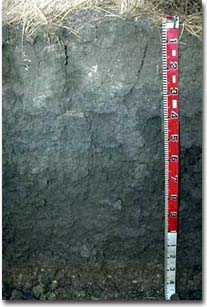 Self-mulching Grey Vertosol in the Horsham Region |
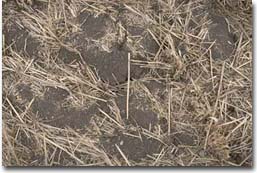 Self-mulching surface soil | Vertosols are are also distinguished based on surface soil structure (ie. self-mulching, epipedal and massive). Both Self-Mulching and Epipedal Vertosols are common throughout much of the Wimmera region. |
| This map presents a broad overview of the distribution of Vertosols in the Wimmera region. A number of soil surveys have been done in this region (see Soil and Land Survey Directory) at varying scales and intensity. In some areas very little soil survey has taken place. This map has been developed by generalising existing survey boundaries. In areas where no survey has taken place, some site information has been used. In all cases it is best to refer to the original survey reports to find more detailed information about an area of interest. | 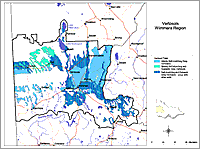 Vertosols Wimmera Region |
| This broadscale map should be used as a general indication only of the distribution of Vertosols in the Wimmera region. Soils are difficult to map at this broad scale because of their diversity. Even in relatively small areas, a number of soils may occur which relate to differences in topography and landscape position. Variation in some of the major soil profile properties can also occur within these mapped areas. Any enterprise should be based on a proper on-site assessment of the soil and landscape. | |
| Occurrence Vertosols in the Wimmera usually occur on level to gently undulating gilgai plains. In the Wimmera, the parent sediments are mainly alluvial and aeolian clayey materials which blanket some of the higher ridges but occur mainly in the intervening fluviatile plains. On alluvium along the creeks and rivers and on the lake bed deposits there are usually coarsely structured (Epipedal) Grey Vertosols. Epipedal Vertosols mainly occur on the plains to the south of the Wimmera River. Self-mulching Vertosols are common in the Horsham and Kaniva regions. | 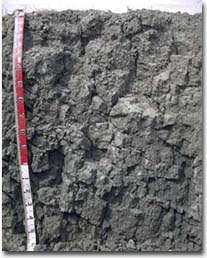 Grey Vertosol with coarsely structured (epipedal) surface in the Horsham Region |
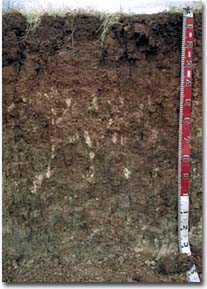 Red Vertosol in the Horsham Region | Soil characteristics
|
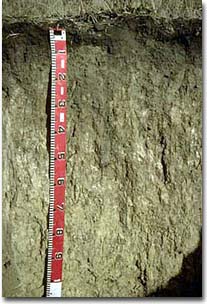 Grey Vertosol in the Nhill Region with large amount of carbonate (lime) throughout the profile. | Epipedal and Self-mulching Vertosols differ with respect to surface soil friability, pH, profile salinity and clay mineralogy. The self-mulching Vertosols are more friable and easy to work and provide most favourable seedbed conditions. The self-mulching Vertosols are extensively cropped for cereals and also support many legumes and oilseed crops. Epipedal Vertosols have coarser structured and more dense surface soil and usually have less well developed gilgai formation. |
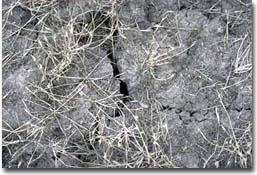 Coarse structured (epipedal) surface soil |


